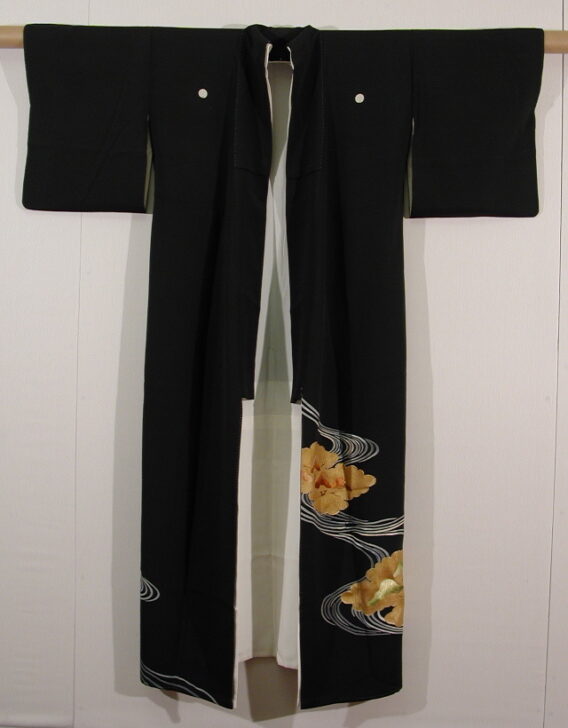Kimono
Japanese

Description
Kimono
Japan, Showa period (1926–1989)
1970s–early 1990s
Black silk crepe with painted, gilt and embroidered designs
Gift of Howard and Patricia Yamaguchi, 2005/1.377
Starkly elegant black tomesode are the most formal kimono, worn only by married women on festive occasions. This kimono has five family crests—two on the front, and three on the back—and abstract designs of pine trees, golden clouds, and a flowing river discretely incorporated on the hem. The materials and techniques suit the kimono’s intended formality: the wavy lines are hand painted in the yûzen dyeing technique, which allows for a vivid rendering of motifs using rice flour paste to resist the dye; the cloud was created by applying gold leaf to the fabric, a traditional technique called surihaku; and the pine trees are embroidered with silver threads. This complex layering of various techniques is characteristic of Japanese luxury textiles.
Subject Matter:
This is a tomosode kimono, the most formal format, as indicated by the five crests. The reserve technique for the crest is also the most formal (versus embroidery, for example). A tomosode kimono would be worn by a married woman to the wedding of a close relative.
The technique used to create the design on this kimono is yuzen, developed in 17th century Japan. Yuzen require much skill and hard work, by first protecting the design area with a rice-paste resist and dying the rest of the cloth. Afterwards, the resist is removed and the design and details are hand-painted.
Physical Description:
Black silk crepe with yuzen (paste-resist hand-painted), surihaku (silt) and embroidered designs. Five crests done in reserve (appears as white on black). Lining is plain-weave white satin for the entire length of the kimono. Collar, upper torso, and sleeves have a double lining.
Usage Rights:
If you are interested in using an image for a publication, please visit https://umma.umich.edu/request-image/ for more information and to fill out the online Image Rights and Reproductions Request Form.